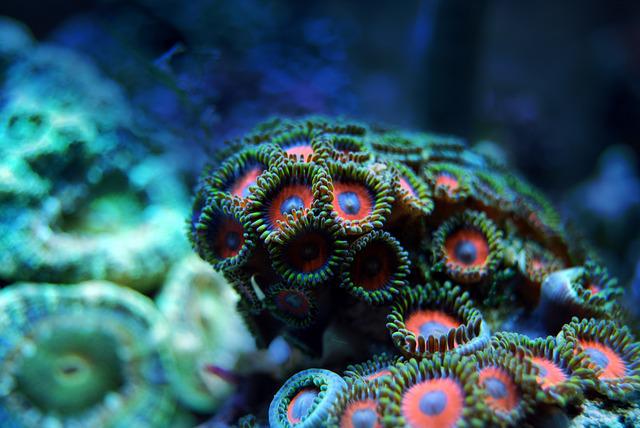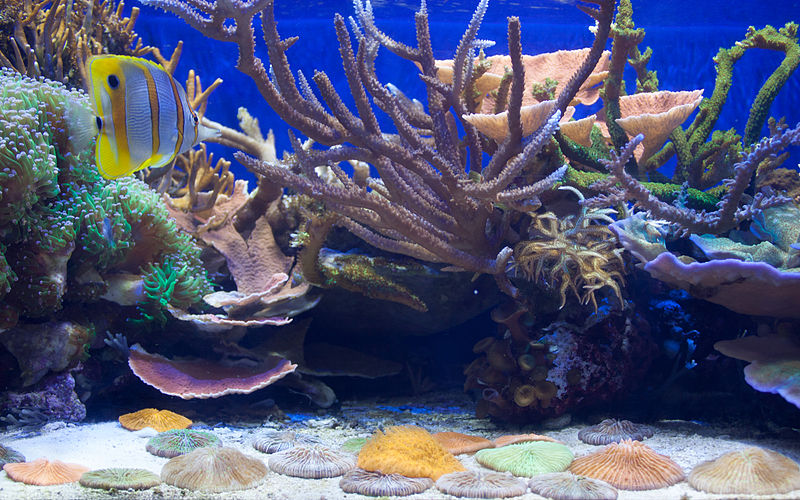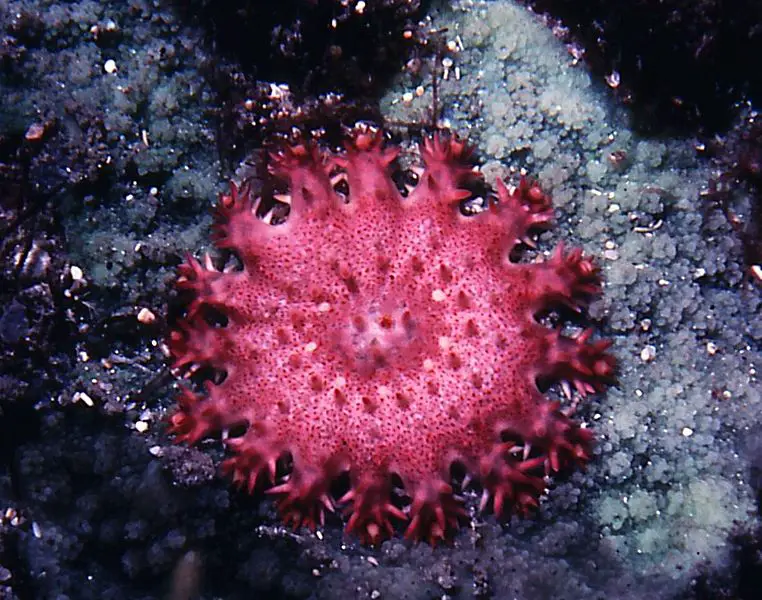Zoanthids (zoanthidea) are vibrant and colorful corals that have become widely popular for home aquarium and reef aquarium keepers. While these corals are fairly low-maintenance and beautifully carpet the rocks in your tank, there are some things aquarium keepers should know about zoanthids.
Zoanthids sometimes contain the highly toxic Palytoxin and spread relatively fast – usually increasing in polyps every week. While they’re naturally found in coral reefs and deep sea environments, you can acquire them from pet stores for your aquarium.
To learn more about the various details of caring for this type of coral in a home aquarium, keep reading. The rest of the article will highlight how many polyps you can expect to grow on a regular basis, the relative toxicity, and what these corals eat and need to survive. Let’s get into it!
How fast does zoanthid coral grow?
Zoanthid corals are known to spread and asexually reproduce fairly quickly. Although you won’t see new polyps appearing at lightning speed, per se, you will notice that new ones will start to form on a weekly basis.
Depending on the specific variety of zoanthid coral you have, they may grow anywhere from 3-10 new polyps in a month’s time. As a result, they often take over the rocks and other spaces in tanks where they can attach in a carpet-like manner.
Round surfaces often become covered in groupings of zoanthid polyps, resulting in what looks like small colonies.
Compared to Other Coral
Compared to the rate of growth of branching corals, zoanthid corals grow faster because they continue to reproduce. While a branching coral might only grow a couple of inches in a year’s time, the zoanthid corals will take up space much faster than that.
Compared to the rate of growth of other corals, zoanthid corals grow at a somewhat slower speed. For example, purple stylophora corals can double in size in just a few months’ time. Otherwise, the growth rate of corals usually depends on their living conditions.
Are zoanthid corals toxic?
One subject of controversy in the aquarium world is whether or not it’s really safe to keep zoanthid corals. Well, we’re here to dispel any misunderstandings. Zoanthid corals do contain a highly toxic substance known as Palytoxin. Palytoxin is actually one of the most potent marine toxins that exist in our world.
If this toxin enters a human bloodstream or gets ingested, it can cause serious illness and be fatal in worst-case scenarios.
This is why, when you’re propagating your zoanthids and snipping them, you need to take serious precautions so that you don’t cut yourself. You also don’t want to handle them when you have any open wounds, as this could lead to the toxin getting into your blood.
Although there is an antidote to this toxin, aquarium keepers should avoid it at all costs. Opinions on the matter vary, but some people even believe that this toxin can get into the body through skin contact, which is a great reason to wear protective gloves when handling zoanthid corals.
How do you take care of zoanthid corals?
Like any aquarium creature, you need to follow strict guidelines to maintain your zoanthids and keep them from dying off. They are delicate, as most reef creatures are.
Feeding Zoanthid Corals
Feeding is a pretty low-maintenance task when it comes to these particular corals. Zoanthid corals use photosynthesis to thrive, but they’re also capable of capturing their own prey (like plankton) if your tank allows it, so you don’t technically need to add food to the tank for them. However, occasionally, you may need to supplement their diet with reef food.
You can mix the particle reef food with water to create a paste that you drop over the zoanthid polyps. This should be done when the tank filtration and flow are turned off so you can get the adequate placement of the food.
Other acceptable foods for zoanthid corals include:
- Brine shrimp
- Bloodworms
- Krill
- Meaty food
Zoanthid Light Needs
Light is super important for corals to survive. In your aquarium, don’t neglect your zoanthid corals by leaving them in the most extremely lit areas of the tank.
For example, keep them away from the brightest lit area and dimmest lit area. They need a decent amount of light (about 5 watts of light per gallon of water in the tank).
Zoanthid Water Needs
For water maintenance, make sure that the tank has:
- Saltwater (1.025 specific gravity)
- Moderate water hardness (8-12 dKH)
- Slightly basic water (around 8.0-8.3 pH)
- Warm, tropical temperatures (about 78-80 degrees Fahrenheit)
You also want to make sure that the tank has proper filtration – preferably with a medium intensity flow. If the flow becomes too high, it will stunt the growth of the corals.
Zoanthid Tank Needs
Additionally, you want a tank that is a minimum of 10 gallons, and you want to size up as you introduce new corals or the polyps start to spread.
Unlike other types of coral, Zoanthid corals don’t generally prefer a tank substrate. Instead, give them large rocks to grow on, and place them where the tank flow is most moderate.
Where can zoanthid coral be found?
In the wild, you can find zoanthid corals in deep sea environments, coral reefs, and other ocean environments. However, many aquarium stores and pet centers offer these corals for aquarium keepers. Because they’re highly common among collectors, they are pretty easy to find.
Final Thoughts
Interested in introducing some zoanthid corals into your home aquarium? If so, you need to be aware of the relative toxicity of these creatures, as well as how to care for them. Hopefully, our guide has given you a decent insight into the feeding habits and tank needs for zoanthids.
These toxic corals are beautiful but require strict parameters, like slightly basic saltwater with a moderate flow and light source. Make sure to properly study up on the care needs for these corals so that you don’t endanger them in your home aquarium.



